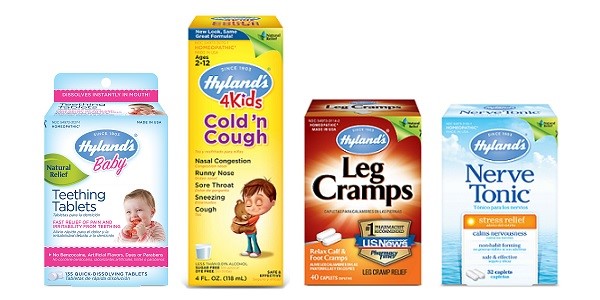

In a transcript of their recent podcast Q&A, Profitero’s Keith Anderson speaks with Garrett Bluhm, Director of eCommerce at Hyland’s, Inc.
Garrett discusses some of the tools he uses to measure, analyze, optimize, and automate every day routine tasks that are essential to both his personal and professional life, using tools such as If This Then That (IFTTT).
Q: Garrett, I think it would be helpful just to get to know you and your background. You come from a group that I think had a big impact pretty early in the eCommerce industry among CPG and FMCG companies. Tell us a little bit about your current role with Hyland’s and some of your prior experience and what brought you here.
I currently work for Hyland’s which is one of the largest brands in the homeopathic medicine category. Prior to working with Hyland’s I had no idea what homeopathy was, so it was a bit of a culture shock in some ways for me but at the same time a very easy and smooth transition so far.
I started out at Schiff Nutrition which was subsequently acquired by Reckitt Benckiser (RB). I quickly realized there was a ton of opportunity and a ton that I didn’t know about eCommerce, specifically in the e-retailing department. That’s the team that I was moved into. I was quickly brought up to speed on how to really work with Amazon, and I guess you could say, how to manipulate Amazon. I really enjoyed my time at RB, and as stressful and crazy as it was we were definitely leading the charge and changing the way the brands operated and marketed on Amazon. From RB, I had a short stint at Unilever before transitioning to Hyland’s
Q: You’ve previously shared with me an approach that you’ve used in both the professional and the personal realm basically, to be effective and drive performance with all kinds of competing priorities. Tell us a little bit about what that approach is and how it applies in each domain.
Stepping into Hyland’s was kind of stepping into the unknown for me. I was taking on 30 new accounts and most of them had numerous problems to be taken care of. I had very little content to work from, and rampant third party competition and pricing issues.
At that time, I was really about optimizing. That’s where I probably will start my conversation. Optimizing was a term that I had heard thrown out there all the time when I was working at Reckitt. “We’re optimizing content. We’re optimizing feeds. We’re optimizing channels,” so I quickly realized and kind of became almost infatuated with this idea of optimizing.
Optimizing to me really means breaking down something to the fundamentals, identifying the most essential and important parts, and then eliminating the excess aspects that you don’t really need, whether it be with content, whether it be with feeds or anything. The unimportant things don’t need to be in there and you should get rid of them. You should focus on the fundamentals, the basics, and the right things that need to actually be expressed. Different goals can be negotiated, whether it be manipulating search ranking or whether you’re trying to give the customer the best opportunity to find your products.
I think that true optimization starts with data collection. From e-retailing data there’s lots of different data points and there’s all this common understanding that there is a lack of data in e-tailing, especially with other customers. Amazon is getting better at being more transparent with a lot of their data, though it can still be confusing at first to really know what aspects are most important, what aspects are important to your vendor manager, what should be important to you and your company.
My number one daily dataset is PCOGS (Production Cost of Goods Sold) and seeing my trend over time. My out of stock rate is definitely probably my number two, which helps me react to things and making sure that I can adjust my offering if I have one to backfill. I have other data sets that I collect weekly and monthly, such as vendor lead times, and making sure our products are getting to Amazon in enough timely fashion.
Once you have these solid data sets you can start your optimization. Really once you start the optimization, looking back at the datasets helps you identify if you were being successful or not. For me on a personal level and going back to shifting both my worlds, my work life and my personal life and focusing on optimization, health is an extremely important aspect to me. I try to live right, eat, live well, and just eliminate stress when it’s possible.

Q: It sounds like you’ve used data in many facets of how you work and live to understand first where time and effort is going, but then secondly to identify the really essential activities that drive the outcomes that you’re looking for. That lets you identify where to prioritize and then protect certain times so that you can definitely execute on those essentials.
I would almost say it’s using Pareto principle, the 80/20 rule. I know that 20% of my time is probably the most effective time where I get 80% of my work done. So if I can really narrow down that 20% of time and focus on that time I should be able to get 80% of that work done on a smaller time basis because I’ll have less distractions.
The next phase would be moving into automation. One of the major things that automation does for me is to just eliminate some of that excess that you don’t really need to pay attention to, such as clearing out your inbox and having everything with ‘unsubscribe’ go to a nonessential folder.
Amazon as we know is shifting to a self-service model. Self-service is definitely applicable to automation. Seller Central has tons of different things that are self-service and also that can be automated, such as self-service pricing, inventory levels, customer service, item setups, maintenance, etc.
They’re moving into more of the vendor site AMS which previously used to be done through vendor managers. Now we don’t have to focus on those people anymore. We’re actually able to do this ourselves, which again is putting that load back onto the vendors’ shoulders to take care of the actual data collection, making sure that the metrics are right, making sure that you’re not overbidding on things, making sure that you’re getting the ROI that you really want to get from these different ads.
Amazon’s Advertising Platform are also dabbling with self-service options right now. Vendor Central has the best deals and lightning deals that are transitioning to more of a self-service mode. Then even if you look at Amazon retail from a consumer standpoint, with the Dash buttons, Subscribe and Save, and the Amazon Echo, there’s the ability to repurchase products. Everything is kind of shifting to making it easy and less work for Amazon to actually accomplish, but putting it back onto the consumers or to the customers or vendors.
Some of the ways that I tried to automate at Hyland’s, and I’ll be kind of vague here because I don’t want to give too many of my secrets away, but content updates is probably one of the most difficult things I’ve seen in every manufacturer. It’s just so time consuming. No one’s really getting it exactly right. Everyone’s trying to figure out a way to make sure that their content is always correct.
Now there are easy ways to flag these. One is through Profitero and other kind of programs like that. Then there’s the need to process our workflow in order to fix those things. I’ve been dabbling and exploring on ways that we can actually automate that process e.g gathering the content and building an API feed to our product content repository, and then building that feed to automatically email to a Vendor Premium Services (VPS). By doing that you can set up even an IFTTT trigger to automatically email or forward an email to Vendor Premium Services to start a new case.

Q: For those not familiar with If This Then That or IFTTT, can you briefly explain?
IFTT is an app or a program that connects different programs I guess. It’s like the middle man for connecting devices or connecting different triggers. I have a lot of different IFTTT types of capabilities where I have Alexa which is able to order an Uber for me through IFTTT. I have the ability to send images directly from my phone. Every time I take a picture it automatically uploads into a Box account. That way I can just delete it off my phone. I don’t have to take up the storage space. There’s a lot of different applicable things that you can do. One of the things you can do is also trigger emails based off of sender or based off of the exact phrasing or something that comes through on an email. That’s my take of IFTTT.
Q: What I love about what you’re doing is you’re linking all of the data to very specific actions, which I think helps ensure that you’re getting the kind of outcomes that you want. As I listen to you talk about your background, there’s a clear health and wellness orientation to at least a few of the brands you’ve been associated with. I’m curious what your thoughts are about anything that’s unique or different about supporting health and wellness brands. Are there implications for search, content, regulatory compliance and pricing?
Having worked with vitamin companies and then moving into the homeopathic space, they’re very similar.
The most interesting thing to me for homeopathy is the general lack of information. People just don’t know about it. Really what I see is that a lot of the opportunity lies in content , whether it be video content, infographics, images and making sure it’s telling the brand story.
Our company is over 100 years old, and we make sure that customers know that this is a trusted brand. That’s actually one of our slogans, as we’re trusted by generations of moms. Our target market is the millennial mum. We go after the moms who have their teething babies. That’s one of our biggest products, teething tablets. People have questions. They want to make sure that these are safe for their kids. They want to make sure what ingredients are in them. They want to know if it’s organic, if it’s GMO, if it contains any type of contaminants or anything that they don’t want their kids to be having.
I want to make sure that my customers know that they can go to Amazon and get all of the information that they need to, without having to go and google something, without having to go and find what this ingredient is on Wikipedia or something else, but that information is listed and they have a one stop shop to really just find about the content and understand our product.
From a challenging standpoint, the health and wellness category is definitely experiencing a lot of third party disruption. There’s been thousands of vitamin startups where they’re basically sourcing products from China and relabeling it and selling it on Amazon.
That’s my concern. I know that our manufacturing processes are super tightknit, that we follow everything to an exact T. But some of these other places and these other third parties are making that challenging, because if it’s not as regulated, then these guys can come in with different products that are’t as clean or aren’t as well-manufactured, and then it gives the whole kind of category a bad reputation in some sense.
Q: Well, Garrett, thank you so much for joining us. If people want to get in touch with you, how can they reach you?
Look me up on LinkedIn. That’s probably the best way: Garrett Bluhm.
To hear other industry thought leaders discuss key eCommerce trends impacting the CPG and retail sector today, visit the Profitero Podcast Series.


























